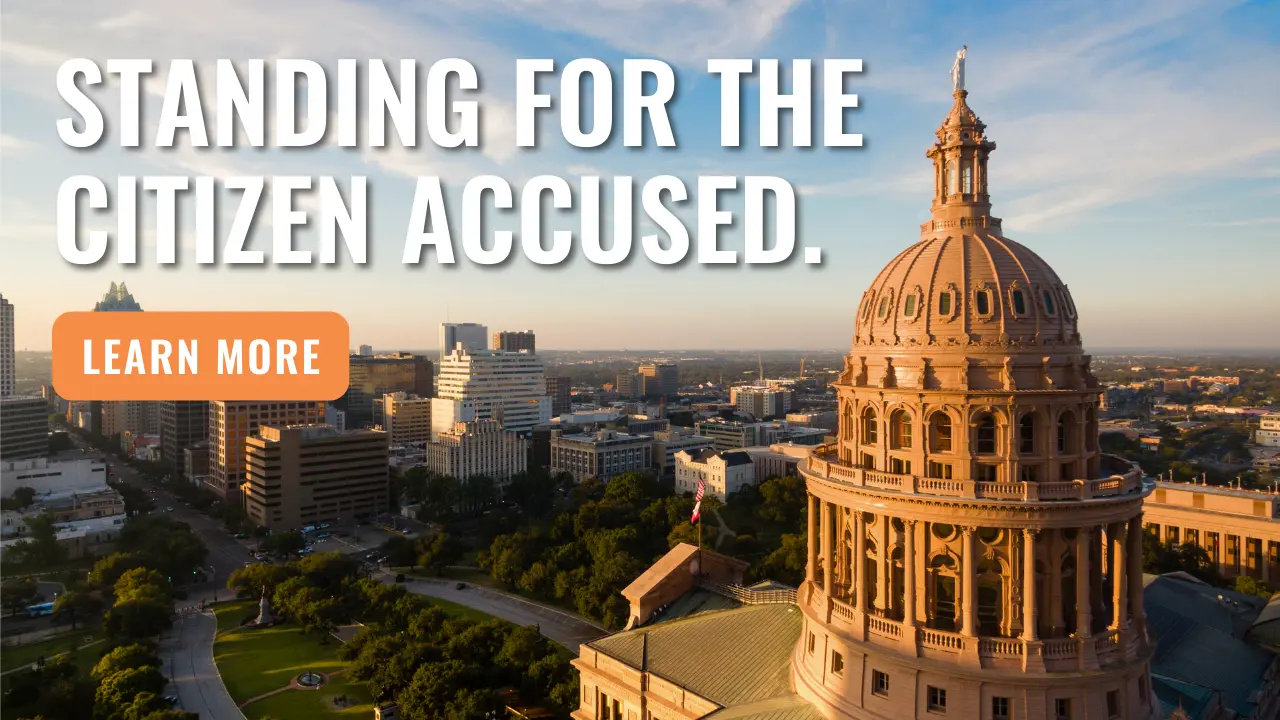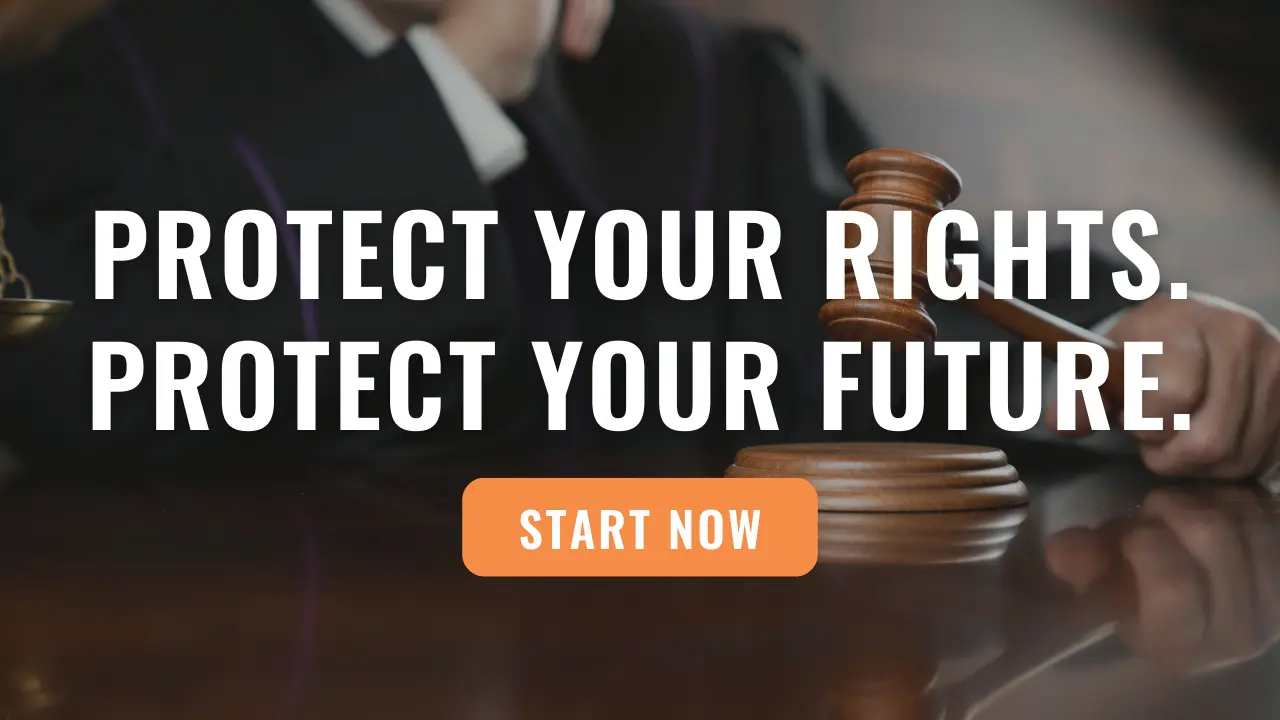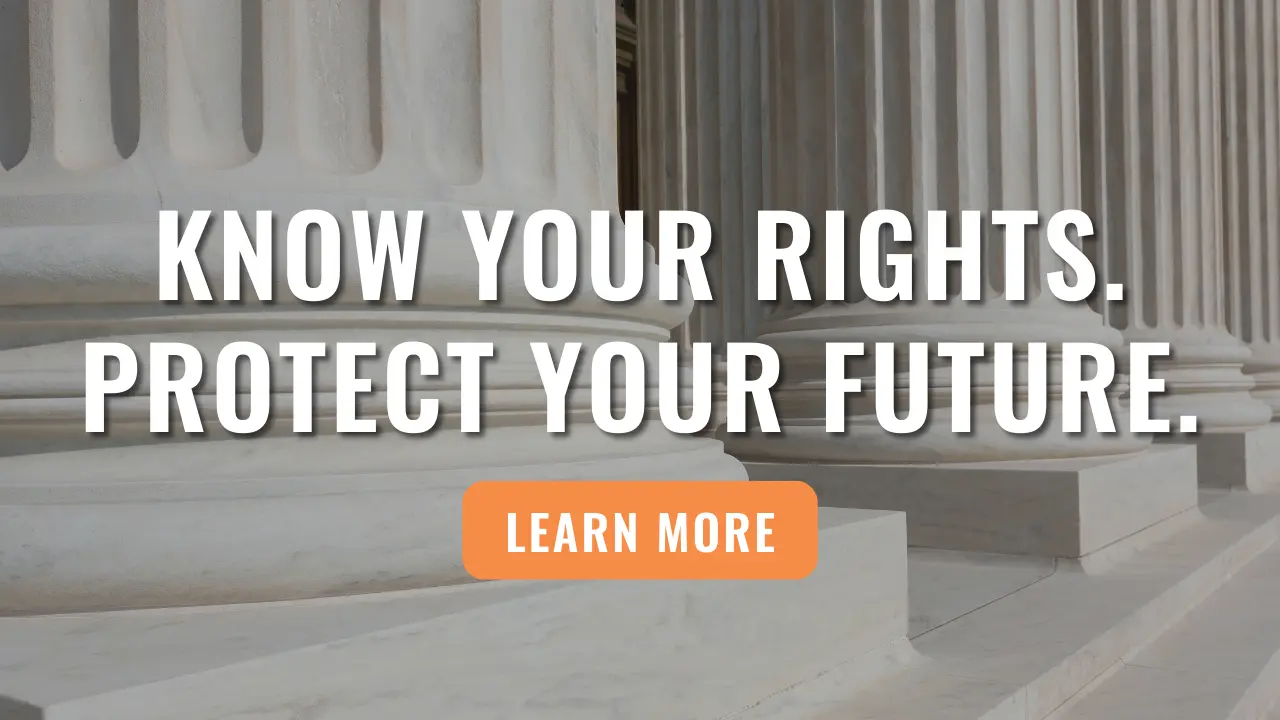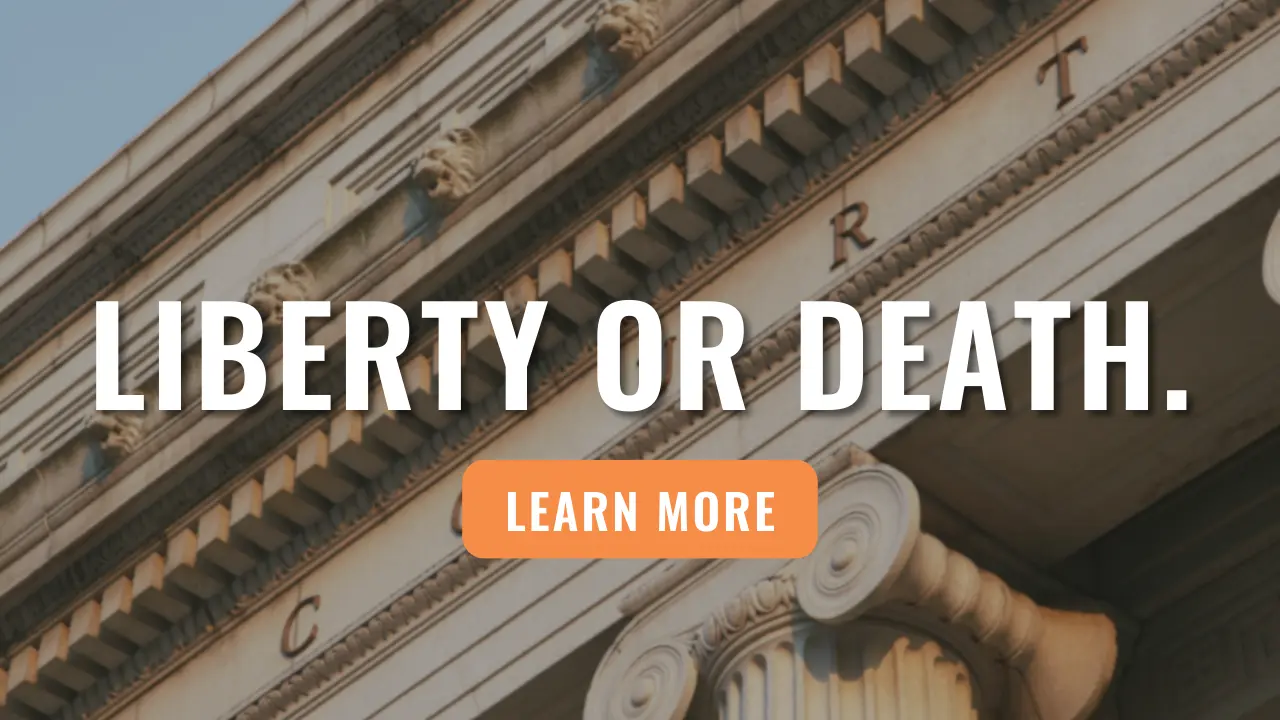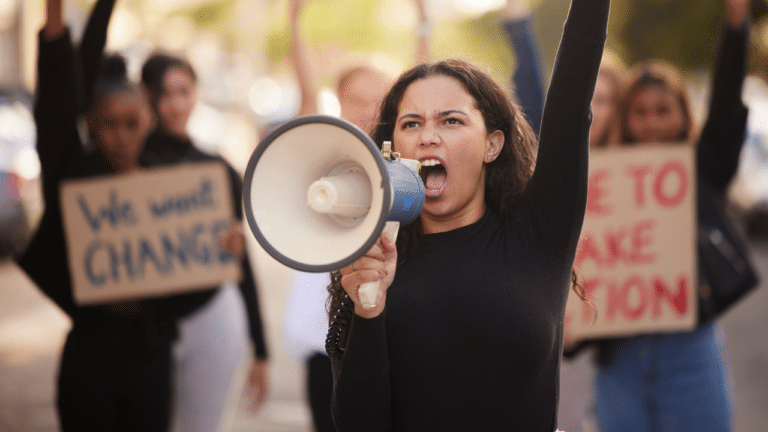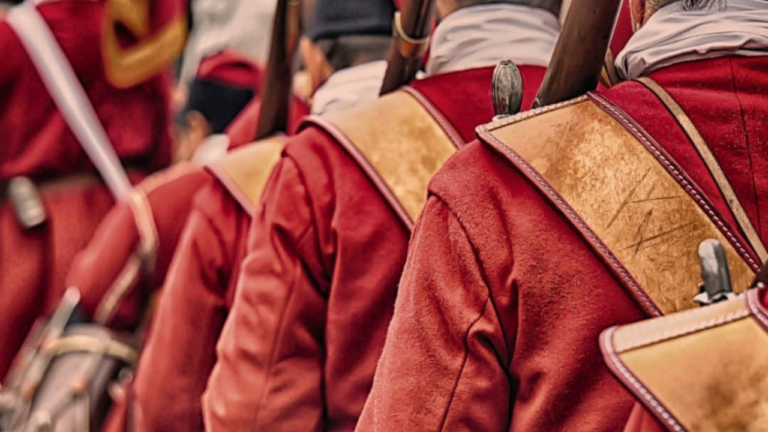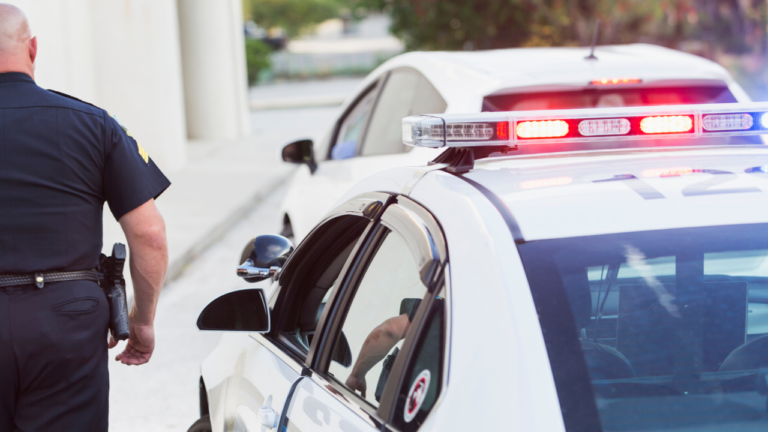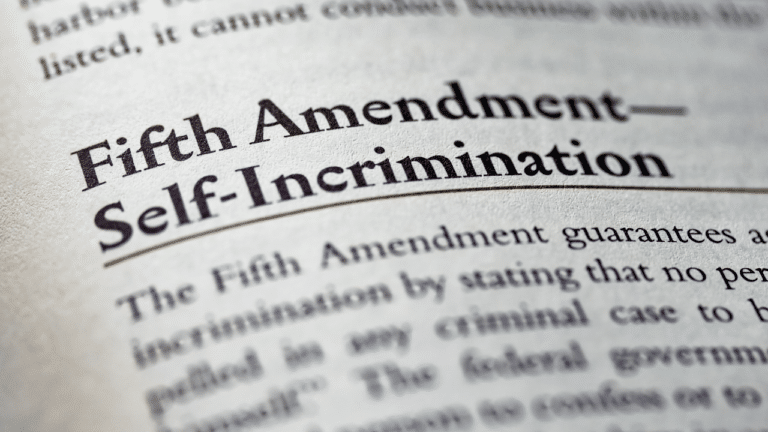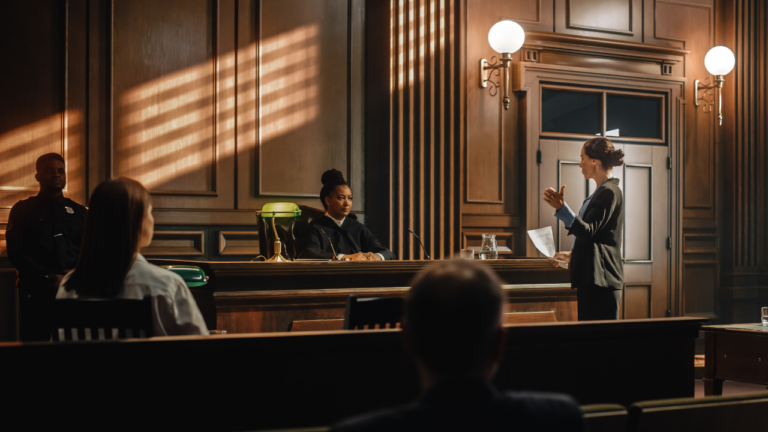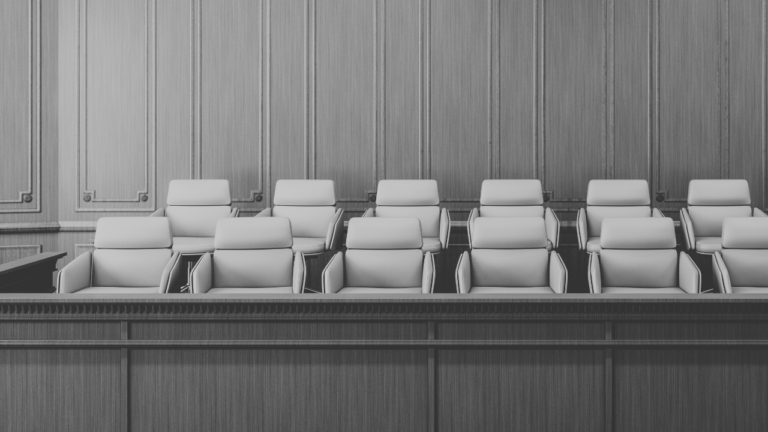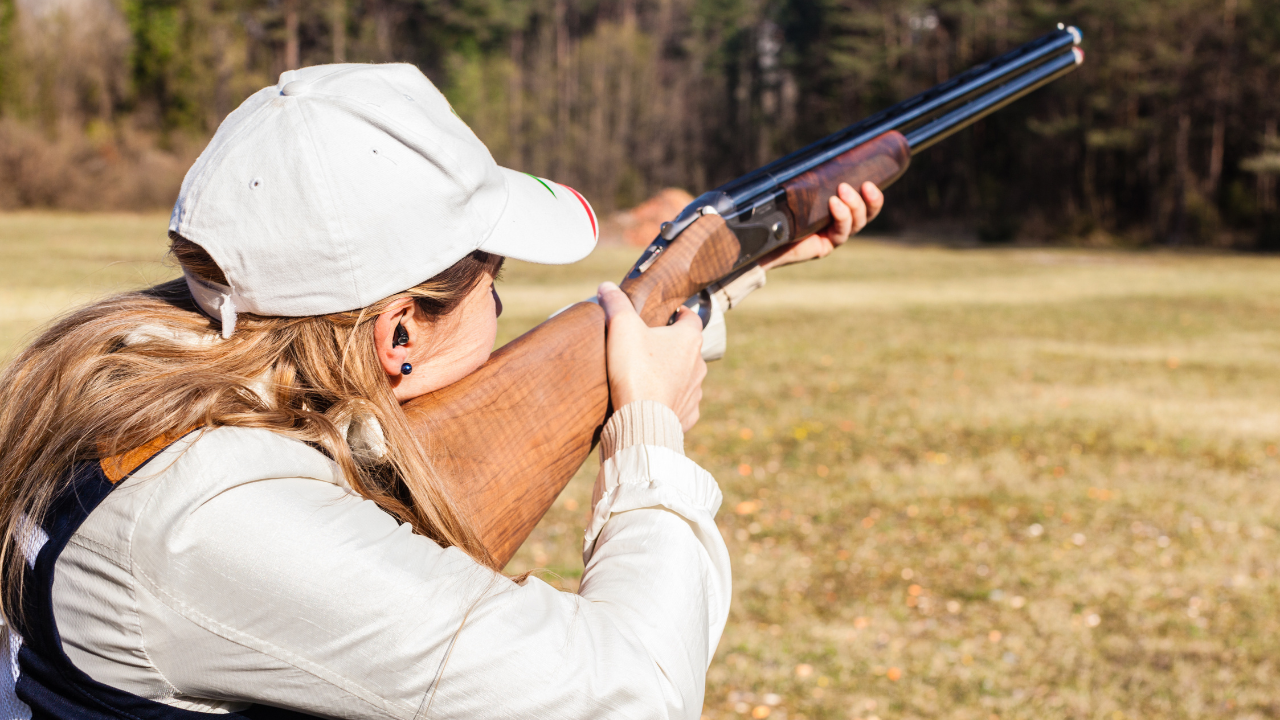
The Second Amendment to the Constitution of the United States protects the right to keep and bear arms. The right to own and carry weapons, particularly firearms, has been a controversial topic of debate since its enactment in 1791. Today, amendment two is interpreted by the Supreme Court of the United States to permit gun ownership for most citizens, as well as the right to carry guns in most locations.
The ratification of the Bill of Rights signifies the commitment of the early American states to safeguarding individual liberties and guaranteeing citizens’ rights against potential abuses by the government. It remains a powerful testament to the core values and principles upon which the United States was founded.
WHAT IS THE TEXT OF THE SECOND AMENDMENT TO THE UNITED STATES CONSTITUTION?
U.S. Const. Amend. II. KEEPING AND BEARING ARMS.
A well-regulated Militia, being necessary to the security of a free State, the right of the people to keep and bear Arms, shall not be infringed.
WHAT IS THE BACKGROUND AND CONTEXT OF THE SECOND AMENDMENT IN THE BILL OF RIGHTS?
The right to keep and bear arms, codified in the Second Amendment, is said to be a pre-existing right inherited from English ancestors.
The Framers of the U.S. Constitution, including John Adams, Thomas Jefferson, and James Madison, recognized the importance of protecting individual liberties from government intrusion. Their intention, made clear by the Preamble, was to “form a more perfect Union, establish Justice, insure domestic Tranquility, provide for the common defense, and promote the general Welfare.”
To assuage the Democratic-Republicans and Anti-Federalists, framer James Madison drafted the first ten constitutional amendments, known as the Bill of Rights, based on the desire to avoid another tyrannical government they had fought so hard against. The Federalist party secured the ratification of the U.S. Constitution by promising the addition of amendments codifying fundamental liberties outlined in the Bill of Rights.
The Bill of Rights guarantees fundamental freedoms often restrained by despotic, oppressive governments. It encompasses “the great rights” such as the 6th amendment and 7th amendment right to trial by jury, the first amendment freedom of the press, and the 2nd amendment right to keep and bear arms. They are considered the “choicest privileges of the people” in the United States, and are protected from government overreach.
The first ten amendments were proposed to several state legislatures by the First Congress on September 25, 1789. New Jersey was the first State to ratify the Bill of Rights on November 20, 1789, followed by Maryland, North Carolina, South Carolina, New Hampshire, Delaware, Pennsylvania, New York, and Rhode Island in 1790. Vermont and Virginia ratified the Bill of Rights in 1791, resulting in its adoption. The Legislatures of Connecticut, Georgia, and Massachusetts held out on ratification until 1939.
WHAT IS THE HISTORICAL ORIGIN OF THE SECOND AMENDMENT TO THE UNITED STATES CONSTITUTION?
The Second Amendment to the Constitution is a descendant of the history of the British Isles. Even in modern cases about the right to bear arms, the parties argue about the meaning of the 1328 Statute of Northampton and subsequent interpretation. But the right to arm oneself is thought to be inherent, merely codified by the Second Amendment and its predecessors.
Who was King Alfred the Great?
King Alfred, also spelled Aelfred, ascended the throne of West Saxony in A.D. 871 during a war with the Danes, a Viking people, who had conquered parts of England and extorted massive tribute payments. King Alfred, starting with a guerrilla band hiding in swamps, led England back from the brink of annihilation. Recognizing that another Danish invasion was inevitable, King Alfred built England’s capacity for self-defense with the guiding principle that all freemen should be armed, trained, and ready to fight to defend their local and national communities.
In United States v. Miller, the U.S. Supreme Court quoted Sir William Blackstone’s 1765 Commentaries on the Laws of England: “[K]ing Alfred first settled a national militia in this kingdom,” and recognized Alfred’s first English national militia as the ancestor of the Second Amendment militia.
What is Posse Comitatus?
Posse Comitatus is a Latin phrase meaning “the power of the community.” The term has been used historically to describe a group of citizens mobilized by the sheriff or other authority figure to keep the peace, suppress lawlessness, and defend the county.
The Posse Comitatus Act of 1878 prohibits military intrusions into civilian affairs, except where Congress has recognized a specific need for military assistance in law enforcement. 18 U.S.C. § 1385 (2000). The Act attempts to maintain traditional separation between military and civilian law enforcement, but does not prohibit all manner of cooperation or interaction between civilians and the military. The use of military resources is authorized if there is an independent military purpose for their involvement.
Does the Second Amendment apply to the State and Local Governments?
Yes. In McDonald v. City of Chicago, the United States Supreme Court held the Second Amendment protection applied to the States through the Due Process Clause of the Fourteenth Amendment.
Prior to 2010 when McDonald was decided, each state legislature enacted its own gun and weapon regulations. In fact, prior to the ratification of the Bill of Rights in 1791, each State had its own version of the right to keep and bear arms in its respective constitutions. But the Court in McDonald struck down a Chicago ordinance effectively banning handgun possession by almost all private citizens. The Second Amendment right is deeply rooted in the Nation’s history, and tradition, and is thus fundamental to the Nation’s scheme of ordered liberty.
What is the social and political history of the modern-era right to arms?
Prior to 1968, federal regulation of firearms prohibited concealable firearms from being shipped through the mail, taxed and regulated a small category of items considered especially dangerous, and required interstate firearms sellers to obtain license and follow record-keeping requirements.
The 1950s brought the robust civil rights movement in the South, during which over one hundred civil rights workers were murdered. Despite overtly racist firearms laws, many black Americans and civil rights workers armed themselves for protection, and were able to fight back in self-defense against the Ku Klux Klan. Activists carried guns in defiance of discretionary permitting schemes, like the one that said a bombing at Martin Luther King’s home did not constitute good cause for granting him a license to carry a gun. Over the next decade, in a country plagued by riots and racially driven gun violence, the Black political establishment became allied with the national gun control movement.
Amidst political unrest came gun control legislation. Congress passed the Gun Control Act of 1968 (“GCA”) in September of 1968. Recognizing that outright bans were neither politically viable nor constitutional with certainty, the Act banned gun possession by enumerated prohibited persons, such as convicted felons, illegal aliens, and illegal drug users. It also required gun dealers to keep a federal form to record details of each sale. Mail-order guns were also banned, as were all interstate gun sales to consumers (except where allowed by contiguous states).
By the mid-1970s, the District of Columbia instituted a handgun ban, followed by California and the City of Chicago. But the growing movement to ban handguns energized gun owners, and the topic became a hot-button political issue. For example, 18 states added or strengthened a state right to arms guarantee in response. Ultimately, handgun bans were declared unconstitutional by the United States Supreme Court in District of Columbia v. Heller and McDonald v. City of Chicago.
The National Rifle Association (“NRA”) strongly supported Ronald Reagan during the 1980 presidential election. In turn, Reagan endorsed the NRA’s major legislative initiative, the Firearms Owners Protection Act (FOPA), which passed in 1986 to amend the Gun Control Act to further protect the rights of gun owners.
Federal gun control became a less-debated issue until 1999, when two high school students murdered 12 students and one teacher at Columbine High School in Colorado. With the entire nation in shock, states began passing gun restrictions limiting the number of guns people could buy or possess. Gun shows also became a national issue, but gun control eventually appeared it would no longer be a winning issue.
Today, although the Supreme Court has reiterated that the right to keep and bear arms is not unlimited, it appears to be close thereto. Federal, state, and local governments may not prohibit ordinary, law-abiding citizens from owning or carrying handguns in public, generally without a license or permit.
WHAT IS THE RIGHT TO KEEP AND BEAR ARMS?
The Second Amendment right to keep and bear arms codifies the inherent right of every free citizen to own and carry weapons for protection. Proponents of less government intrusion argue the phrase “bear arms” of course implies the carrying of weapons for the purpose of offensive or defensive action, but does not connote participation in a structured military organization. In other words, the right to keep and bear arms is an inherent right at times of war and peace, for military and personal purposes.
What is a “well-regulated militia” in the Second Amendment?
While the idea of the Second Amendment militia has its roots in King Alfred’s militia, the term “well-regulated militia” is thought to have originated with Andrew Fletcher in 1698, and he intended the term to mean a regular military—i.e., consistently well-trained and disciplined men of fighting age. However, the Supreme Court has said in, albeit dicta, that “the adjective ‘well-regulated’ implies nothing more than the imposition of proper discipline and training.” District of Columbia v. Heller, 554 U.S. 570 (2008).
Historians cite the old Saxon tradition of the fyrd, in which every male aged 16 to 60 bore arms to defend the nation. Even in the Bible, ancient Hebrews relied on militias during their two centuries as a tribal confederation. According to medieval historian Frank Barlow, “[i]t is not unlikely that every freeman had the duty, and right, to bear arms” in Anglo-Saxon times.
Today, most states have active state militias, but the right to keep and bear arms is not limited to those enlisted. The U.S. Supreme Court, Congress, and state and local governments have interpreted the fundamental right to keep and bear arms as inherent to American citizenry.
What does it mean to “keep and bear arms” under the Second Amendment?
The right to keep and bear arms recognizes the individual right to own and carry firearms for the primary purpose of self-protection. The Second Amendment has been broadly interpreted to confer the right of most American citizens to own and carry numerous types of weapons.
In District of Columbia v. Heller, the U.S. Supreme Court affirmed one’s right to “keep” a functional and accessible firearm in the home. The right to “bear,” or carry, was further interpreted in 2022 by the Supreme Court in New York State Rifle & Pistol Association v. Bruen. Prior to 2022, most states had “shall issue” handgun carry licensing laws—if a concealed-carry applicant met certain statutory criteria (e.g., minimum age, passing a fingerprint background check, safety training), the applicant “shall” be issued a concealed carry permit.
In New York State Rifle & Pistol Association v. Bruen, the Court held a New York law prohibiting the concealed carry of firearms without a permit was unconstitutional. History and tradition dictate that citizens shall have the right to defend themselves, which, in modern times, may require a handgun.
WHAT ARE “ARMS” UNDER THE SECOND AMENDMENT?
“The arms intended by the Constitution are such as are suitable for the general defence of the community against invasion or oppression, and the secret carrying of those suited merely to deadly individual encounters may be prohibited.”
—Chief Justice Thomas M. Cooley, The General Principles of Constitutional Law in the United States of America (1880).
The text of the Second Amendment has been broadly interpreted to confer the right of most American citizens to own most types of firearms, such as handguns, rifles, and shotguns. Congress defined “firearms” in the Gun Control Act of 1986 as: “(A) any weapon (including a starter gun) which will or is designed to or may readily be converted to expel a projectile by the action of an explosive; (B) the frame or receiver of any such weapon; (C) any firearm muffler or firearm silencer; or (D) any destructive device.” 18 U.S.C. § 921(a)(3). The term does not include antique firearms.
The right to keep and bear arms is not limited to firearms—knives, swords, pepper spray, police batons, and other weapons fall within the purview of the Second Amendment. An important line of post-Civil War nineteenth-century cases read “keep and bear arms” as a right of all individuals to own and carry arms but only the types of arms suitable for military service—for example, rifles, swords, and large handguns, but not arms primarily used for brawls and affrays, such as the Bowie knife.
What are assault weapons?
The term “assault weapon” is a variation on “assault rifle,” which historically described a lightweight military rifle with selective-fire capabilities—i.e., the ability to fire in both automatic and semi-automatic modes. Assault weapons may refer to anything that looks like an assault rifle, or any other gun that looks futuristic, military, or especially dangerous.
There is no consistent legal definition of “assault weapon,” but state laws criminalize possession or transfer of semi-automatic rifles and shotguns based on specified “features.” Assault weapons “features” may include a pistol grip, telescoping or folding stock, flash suppressor, barrel shroud, bayonet mount, or grenade launcher.
State and federal governments began banning assault weapons and large-capacity magazines (LCMs) in the late 1980s and early 1990s. The ban on assault weapons continues, while some states have abandoned their prior laws against LCMs.
What are Large-Capacity Magazines?
Large-capacity, or “high-capacity,” magazines (LCMs) are ammunition magazines that hold more than 10 rounds. The term “large-” or “high-capacity” is a misnomer, because most standard magazines for modern full-size semi-automatic handguns and rifles hold between 11 and 21 rounds. The most popular firearm in American history, the AR-15 semi-automatic rifle, is sold with a standard magazine holding 30 rounds.
Guns with ammunition capacity greater than 10 rounds have been around since 1590, so the Founders were familiar with them. But several states have attempted to limit magazine capacity in an effort to reduce mass shootings, positing that victims might escape or tackle the shooter while he or she is forced to reload. However, between 1994 and 2004, there was only one LCM-involved mass shooting incident in the U.S. in which the shooter was tackled by bystanders (Jared Laughner, January 8, 2011).
Ultimately, determining the effects of magazine size involves a wide array of variables. Simply counting incidents and casualties involving LCMs leads to arbitrary results. Criminologist Gary Kleck determined most mass shootings stop only when the shooter—whether using a large-capacity magazine or not—chose to stop and left the scene, committed suicide, or was stopped by police.
Are short-barrel shotguns protected by the Second Amendment?
The right to keep and bear arms does not include the unfettered right to own a short-barrel shotgun. The National Firearms Act of 1934 criminalized owning or transferring shotguns or rifles with a barrel less than 18 inches in length, and several states have outlawed the possession of short-barrel guns. Shotguns and shotgun cartridges are designed to produce a desired projectile pattern at a specific distance. Their military purpose is the simultaneous projection in the direction at a close-range target of a number of projectiles in order to increase the probability of striking the intended target.
In United States v. Miller, the U.S. Supreme Court assessed the constitutionality of the prohibition on short-barreled firearms: “In the absence of any evidence tending to show that possession or use of a ‘shotgun having a barrel of less than eighteen inches in length’ at this time has some reasonable relationship to the preservation or efficiency of a well regulated militia, we cannot say that the Second Amendment guarantees the right to keep and bear such an instrument.”
Are automatic weapons (machine guns) protected by the Second Amendment?
No. Automatic weapons such as machine guns are banned by the Gun Control Act, which has been upheld as constitutional, and not an infringement on the Second Amendment. The National Firearms Act of 1934 criminalized owning or transferring an unregistered, untaxed machine gun. The Act was amended in 1986 to ban possession of machine guns altogether, so the Secretary of Treasury no longer accepts taxes on machine guns, even if they were made prior to 1986.
In automatic weapons such as machine guns, ammunition fires continuously, as long as the user keeps the trigger pressed. This distinguishes automatics from all other types of firearms (revolvers, lever action, semi-automatic action, pump action, etc.). The first automatic weapons were invented in 1884 by Sir Hiram Stevens Maxim, a British inventor.
The Thompson submachine gun—the “Tommy gun”—was introduced in the early 1920s. It fired automatically, but was as portable as any ordinary rifle, which drastically changed the gun-regulation landscape. By the late 1920s, several states enacted permit laws for machine guns, and the 73rd Congress followed with the National Firearms Act of 1934.
Can the government regulate silencers and suppressors?
Yes. The Gun Control Act and National Firearms Act regulate silencers, as do many states. Hiram Percy Maxim, Sir Hiram Stevens Maxim’s son, invented the Maxim Silencer in 1908 to reduce noise caused by hot gases exiting the muzzle of a gun. State governments and the federal government each have regulations for silencers and suppressors.
WHAT IS GUN CONTROL AND REGULATION UNDER THE SECOND AMENDMENT?
Government regulations of the second amendment right to own and possess firearms must be consistent with the Nation’s historical tradition. This means gun laws restricting gun rights and ownership must be analogous to a pattern of historical firearm regulation. And throughout the years, gun rights have prevailed over gun safety regulations.
What is the National Firearms Act of 1934?
The National Firearms Act of 1934 (NFA) is a revenue scheme—Congress used its tax power to create laws essentially punishing possession and transport of particular weapons, and gun purchases, by fines and possible imprisonment. Specifically, the NFA imposes a tax on manufacturers, importers, and dealers of any one of the six articulated categories of arms and accessories:
- Machine guns
- Combinations of machine gun parts and conversion kits
- Bump stocks
- Short-barreled rifles and short-barreled shotguns
- Silencers and suppressors
- Destructive devices
Notably, gun laws such as the NFA does not tax or regulate handguns, rifles, and shotguns commonly sold at retail stores. The NFA does, however, punish obliterating, removing, changing, or altering the serial numbers or other identification numbers of weapons.
In Staples v. United States, the defendant was convicted under the NFA of possessing a machine gun that was not properly registered with the Federal Government. At trial, ATF agents testified that the defendant’s machine gun was a fully automatic weapon, or one that could shoot more than one shot by a single function of the trigger. The defendant argued he did not know the gun could fire automatically, but the prosecution and judge determined the Government did not have to prove the defendant knew about the feature. However, the U.S. Supreme Court reversed, holding that an accused must have knowledge he was in possession of a machine gun.
What is the Gun Control Act?
The Gun Control Act of 1968 (GCA) superseded the Federal Firearms Act of 1938 (FFA), which regulated interstate commerce in ordinary firearms (rifles, shotguns, and handguns). The vast majority of the nearly 450 million privately held guns in the United States are ordinary firearms regulated under Title I of the GCA.
The GCA requires firearms sellers to have a Federal Firearms License, and buyers to fill out a federal transfer record (ATF Form 4473). One must be at least 18 years old to purchase a rifle or shotgun, and 21 to purchase any other type of gun, such as a handgun. Vendors must contact the National Instant Check System to verify the buyer is not on any list of prohibited persons prior to relinquishing the firearm.
Individuals who are not “engaged in the business” of selling firearms regularly may make the occasional private trade or transactions without going through the federal paperwork or formal customer background checks. However, if the private seller has reason to believe the buyer is a prohibited person, the sale is a federal crime. The U.S. Bureau of Alcohol, Tobacco, and Firearms (ATF) has resources explaining when a license is required. Conducting regular gun sales at gun shows, flea markets, and in other locations for profit will likely require a Federal Firearms License under the GCA.
Ultimately, the GCA seeks a balance between gun rights and gun safety, but the primary fight is over the constitutionality of the state gun regulations for their respective citizenry. For further explanation of the applicability of the Gun Control Act, see the Department of Justice archives.
Who can own firearms under the Second Amendment?
“[T]he right to keep fire arms . . . does not protect him who use them for annoyance or destruction.” Commonwealth v. Blanding, 20 Mass. (3 Pick.) 304, 314 (1825).
The Second Amendment confers the individual right to keep and bear arms, but it is not unlimited. In general, law-abiding citizens’ keep and bear arms is protected, and government regulations may only infringe upon that right under limited circumstances. The Gun Control Act explains the following classes of persons are prohibited from owning or possessing certain weapons:
- Convicted felons, or persons convicted of a misdemeanor with a term of imprisonment exceeding one year;
- Fugitives from justice;
- Unlawful users of or addicted to controlled substances;
- Mentally ill;
- Illegal or unlawful aliens;
- Anyone discharged from the Armed Forces under dishonorable conditions;
- A former citizen of the United States who has renounced citizenship;
- The subject of an intimate party restraining order or protective order;
- Domestic violence misdemeanants;
- A person under indictment for a felony or misdemeanor with a term of imprisonment exceeding one year;
- Anyone under 18 for rifles and shotgun, and anyone under 18 for other weapons.
Where can Americans carry guns under the Second Amendment?
The right to possess firearms for self-defense in the home is at the core of the Second Amendment right, but the term “bear arms” also encompasses the right to carry weapons in case of confrontation outside the home. Several states have enacted laws permitting either open or concealed carrying of handguns, some without a license or permit. In the current political environment, especially post-Bruen, Americans who are otherwise not prohibited from owning a gun can openly carry a handgun in most public places.
People who lawfully own a gun can carry it in their home without a permit. A few jurisdictions require a permit to carry at a person’s place of business, but most states do not require a permit to carry in one’s car. Twenty-six states now do not require permits of any kind to carry a gun in public, whether open or concealed: Alabama, Alaska, Arkansas, Arizona, Florida, Idaho, Iowa, Kentucky, Indiana, Maine, Mississippi, Montana, New Hampshire, New Mexico, North Carolina, Ohio, Pennsylvania, South Dakota, Tennessee, Utah, Vermont, Virginia, Washington, West Virginia, Wisconsin, and Wyoming.
WHAT ARE CONTEMPORARY CHALLENGES TO THE SECOND AMENDMENT?
Accurate empirical and scientific data regarding the correlation between gun ownership, carrying, and gun violence is difficult to obtain for many reasons. Federal law prohibits a central registry of firearms owned by private citizens, and citizens are reluctant to report gun ownership and defensive gun use. Further obscuring any hope of accurate results is the rise in private production of firearm parts using 3-D printers and desktop computer numerical controlled (CNC) milling machines. Other homemade firearms include muzzleloaders assembled from kits, so they would not show up in the data. Illegally imported guns and thefts of guns from military supplies also complicate the analysis.
What does gun violence research show?
Since American gun control became a major national issue of debate in the 1960s, many studies have been completed. However, a potential problem with research is the way in which the author’s personal interests and affiliations bias study results and influence what is ultimately published. Three metastudies have proved to be the most objective and analyze a fill range of empirical claims affecting the gun debate:
-
- First Reports Evaluating the Effectiveness of Strategies for Preventing Violence: Firearms Laws, 52 Morbidity and Mortality Weekly Report: Recommendations and Reports 11 (Oct. 3, 2003);
- Firearms Laws and the Reduction of Violence: A Systematic Review, 28 Am. J. Prev. Med. 40 (2005);
The third metastudy, conducted by the Rand Corporation in 2018, 2020, and updated in 2023, concluded child-access prevention laws reduce injuries and fatalities among youths, and stand-your-ground laws are associated with increased firearm homicides. The bottom line is that the skewed data generally leads to arbitrary results.
What are arguments for and against gun control measures?
Proponents of gun control argue the Second Amendment is controlled by the “well-regulated militia” clause, and was intended solely for the civic republican purpose of enabling a citizen militia. And because that militia no longer exists in any practical sense, the Second Amendment has little if any modern legal relevance. They further rely on nationwide increases in gun violence, accidental shootings, mass shootings, and other gun-related crime to support stricter regulations and tracing.
In fact, scholar David C. Williams argues that the primary original purpose of the Second Amendment was for “the People” to have the ability to overthrow a tyrannical government. And because the virtuous and unified people presumed in the Amendment no longer exist, the Second Amendment is no longer operative in modern times. Williams also criticized the majority in Heller for recognizing the tyranny-resistance purpose, but inventing an implausible theory to uphold machine gun bans.
Gun-rights activists advance the historical interpretation, and point to countless texts and examples as evidence that all free men had the inalienable right to protect themselves, their property, and their country. The term “bear arms” was most often used in a militia or military sense, but it was not limited to that context. In Heller, Justice Scalia emphasized that the phrase “bear arms” does not necessarily exclusively refer to militia-related use of arms, but Justice Stevens’ dissent urges that it does based on the term’s most natural reading.
SECOND AMENDMENT TO THE CONSTITUTION OF THE UNITED STATES OF AMERICA
As a cornerstone of American democracy, the Second Amendment protects the right to keep and bear arms for both common and extraordinary occasions, such as hunting animals or protection from a common foe. The purpose was to ensure American citizens had regular experience in the use of arms. It is not only a right to avoid government tyranny, it is an individual right that protects personal safety.
SECOND AMENDMENT COURT CASES
The United States Supreme Court has interpreted and applied the Second Amendment since its adoption in 1791.
- In District of Columbia v. Heller, the U.S. Supreme Court struck down a law prohibiting law-abiding citizens from possessing guns in their homes. In doing so, the Court affirmed one’s right to “keep” a functional and accessible firearm in the home for the primary purpose of self-defense and protection.
- In McDonald v. City of Chicago, the Supreme Court struck down a Chicago ordinance effectively banning handgun possession by almost all private citizens. In doing so, the Court held the Second Amendment right is deeply rooted in the Nation’s history, and tradition, and fundamental to the Nation’s scheme of ordered liberty. Therefore, the Fourteenth Amendment makes the Second Amendment right to keep and bear arms fully applicable to the States.
- In New York State Rifle & Pistol Association v. Bruen, the Court held a New York law prohibiting the concealed carry of firearms in public was unconstitutional. The New York handgun permit statute required applicants to show a special need for carrying a weapon, and even then, the permit “may” issue, rather than “shall.” The Court held, pursuant to the Nation’s history and tradition, the right to “bear arms” naturally encompasses public carry.








